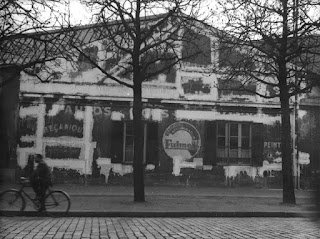Boubat (1923-1999) was born in Montmartre, Paris. He studied typography and graphic arts at the École Estienne and worked for a printing company before becoming a photographer. In 1943 he was subjected to service du travail obligatoire, forced labour of French people in Nazi Germany, and witnessed the horrors of World War II.
He took his first photograph after the war in 1946 and was awarded the Kodak Prize the following year. He travelled the world for the French magazine Réalités and later worked as a freelance photographer. French poet Jacques Prévert called him a 'peace correspondent' as he was apolitical and photographed uplifting subjects.
The essence of Boubat’s spirit is summed up in his own words: “Just as love at first sight erases everything and creates a kind of void, so I must confess that, when I take a picture, I have no desire, no intention, no memory. What I am photographing has taken control of me, it is a leap in the dark. It’s over in a second. This vacancy allows the fleeting instant to break through, the instant in which everything is plunged into one unique light.” (From Edouard Boubat: Pauses, 1983)
Boubat’s work has been exhibited throughout the world including the United States, Europe, and Mexico. He has been awarded several professional awards such as the National Photographic Prize of France and The Hasselblad Foundation Prize both in 1988.
****
The poet Jacques Prévert called him a “peace photographer,” for Boubat was the incarnation of the French humanist, member of a movement without ideology or militants whose urge to capture the simple beauty of everyday life distinguishes their work. His first image, of a tiny girl wearing an outfit of fallen leaves in the Luxembourg gardens, was made in 1946 and became a classic. A photoengraver by trade until 1950, his personal work, especially that featuring his muse Lella, indicated unusual talent.
The poet Jacques Prévert called him a “peace photographer,” for Boubat was the incarnation of the French humanist, member of a movement without ideology or militants whose urge to capture the simple beauty of everyday life distinguishes their work. His first image, of a tiny girl wearing an outfit of fallen leaves in the Luxembourg gardens, was made in 1946 and became a classic. A photoengraver by trade until 1950, his personal work, especially that featuring his muse Lella, indicated unusual talent.
Working under the inspired editorship of Bertie Gilou for the innovative magazine “Realities” 1950-70, Boubat flourished as a globetrotting journalist, but for a magazine that concerned itself more with science, industry, and economic development than with war or conflict. The role suited his temperament, for it allowed him to make small groups of images around a loosely defined subject, rather than detailed picture stories. His dictum was “To photograph is to express gratitude.” His work dealt with simple domestic and personal events, or work, trade, and industry. His “personal” photography produced a charming body of images, where the nude, children, cats, and his own family figure extensively.


































































































































No comments:
Post a Comment